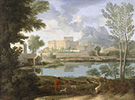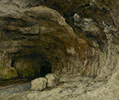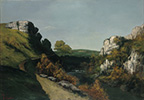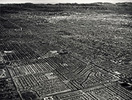
The lessons below for elementary and secondary students examine the distinct ways artists have portrayed the world around them.
|
 |
|
 |
 |
Lessons 1–5 of 5 |
 |
 |
 |
 |
 |

  |
 |
Watching Wheatstacks
Grades/Level: Lower Elementary (K–2)
Subjects: Visual Arts, English—Language Arts
Lesson Overview: Students will learn about basic shapes in Monet's painting Wheatstacks, Snow Effect, Morning. They then learn about light and shadows through reading and experimenting with three-dimensional models and flashlights. Students will also learn about time of day and the seasons.
|
 |
 |
 |
From Foreground to Background
Grades/Level: Upper Elementary (3–5)
Subjects: Visual Arts
Lesson Overview: Students will study the composition of landscape paintings, emphasizing space, depth, and the concepts of foreground, middle ground, and background. Students then create their own landscapes using principles of landscape composition.
|
 |
 |
 |
Rocky Observations
Grades/Level: Upper Elementary (3–5), Middle School (6–8)
Subjects: Visual Arts, Science
Lesson Overview: Students will use visual analysis to examine two images of rocks. They will make their own observations of individual rocks through drawing, and understand how the same observation skills can be used in the study of geology.
|
 |
 |
 |
The Changing Landscape
Grades/Level: Middle School (6–8)
Subjects: Visual Arts, English—Language Arts
Lesson Overview: Students learn about the evolution of landscape painting in France from the 17th to the 19th century. They will examine and compare three landscape paintings, emphasizing space, depth, and the concepts of foreground, middle ground, and background.
|
 |
 |
 |
Environmental Impact
Grades/Level: High School (9–12)
Subjects: Visual Arts, History—Social Science
Lesson Overview: Students will analyze a 20th century photograph of a Los Angeles landscape, utilizing the principles of design and discussing the message of the work. They will also consider the history of Los Angeles within the broader context of population expansion in U.S. history and write a research paper about the environmental impacts of overpopulation.
|
 |
 |
 |
 |
 |
 |
Lessons 1–5 of 5 |
 |
 |
 |
 |
 |

  |
 |









